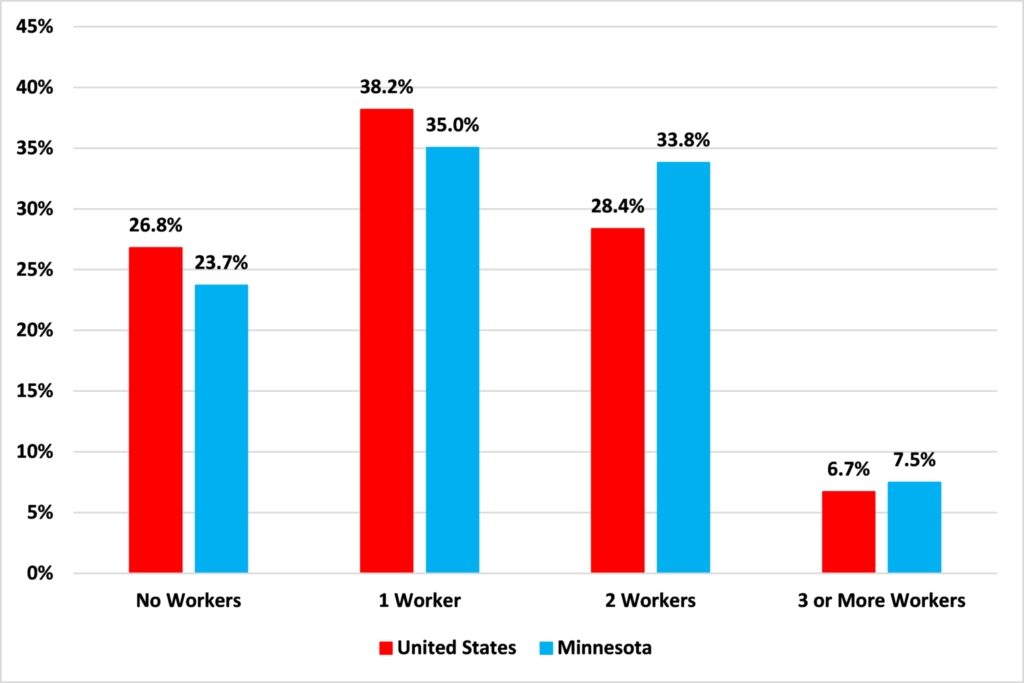Minnesota’s households have high incomes, but only because each one contains more workers
In our new report, The State of Minnesota’s Economy: 2017, we take a thorough look at our state’s economic health and the prospects for the future. The second point we make is that Minnesota’s per-worker productivity has lagged that of the nation generally since 2000.
We’ve already looked at this from the perspective of GDP and Personal Income per capita or per worker. But another way to look at it is with household incomes.
Household incomes in Minnesota and the US
According to Census Bureau data, the median household incomes in Minnesota was $63,488 in 2015. This was 13.8% above the national average, $55,775. This premium has persisted over time, as Figure 1 shows.
Figure 1: Median household income for the US and Minnesota, 2000 to 2015 (2015 dollars)

Source: Census Bureau
Household employment in Minnesota and the US
But remember what we’ve said about Minnesota’s worker productivity. This premium is not the result of more tools or more efficient use of the capital and labor at hand. It is the result of more labor inputs. As Figure 2 shows, Minnesota has a smaller share of households with either no workers or only one worker than the US as a whole. But it has a higher share than the US generally of households with two workers or with three or more.
Figure 2: Proportion of households by number of workers, 2015

Source: Census Bureau
Work is a means, not an end
In other words, Minnesota’s above average household incomes are a result of its above average number of people working in each household.
So what’s wrong with that? Its better to have people working than not, isn’t it?
Yes, it is. After all, up to a point, more people working means more goods and services which means a higher standard of living. But note here that the purpose of work is to produce. It is not an end in itself. In this respect, Minnesota’s economy performs poorly, as we’ve seen. Minnesotans do a lot of work, but they do a poor job, compared to the national average, of turning that work into outputs. And that is the whole point.
John Phelan is an economist at Center of the American Experiment.